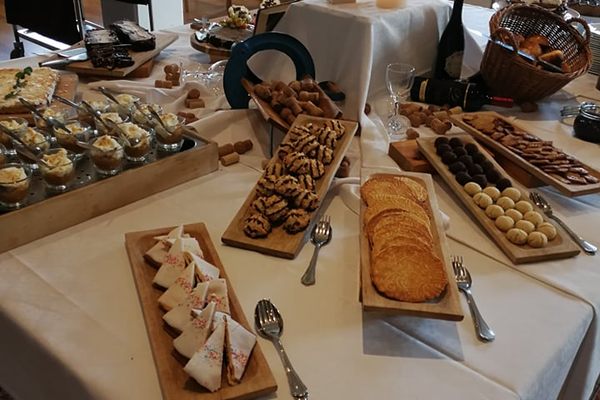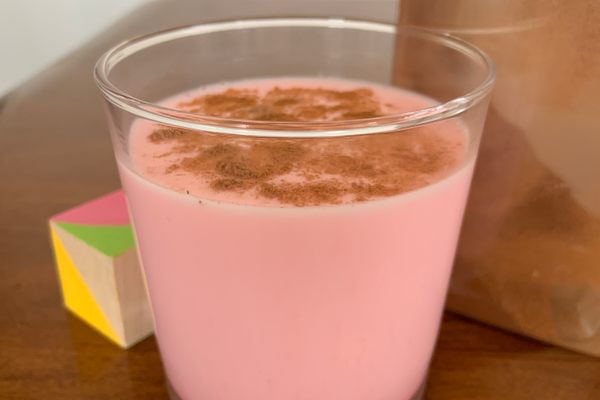On Election Day, American voters leave polling sites with colorful “I Voted” stickers. But in colonial America, voters received a much more spectacular award: a slice of a gargantuan (and often booze-filled) cake.
Election cake, or Hartford election cake, is a breadlike pastry that was popular in the 18th century. Unlike a modern cake, it is leavened with yeast instead of baking powder or soda, and it is the direct descendant of the English Great Cake, commonly eaten during holidays. Since the Puritans of New England rejected holidays like Christmas, Easter, and May Day—due to the holidays’ pagan or “Romish” associations—they celebrated secular occasions like elections. And a holiday called for a cake.
To feed a whole community, bakers often made extremely large cakes. The first published recipe of the cake, published in 1796 by Amelia Simmons, calls for “ten pounds butter, fourteen pounds sugar, twelve pounds raisins, three dozen eggs” and wine and spices. A quart of liquid yeast provided the leavening. The finished cake would weigh more than seventy pounds. According to historian Stephen Schmidt, Connecticut’s Election Day celebration in 1771 featured a behemoth of a cake. The total cost of the celebration came in at £23, while “[the] materials of ‘the great election cake’ itself cost £3, and a certain Mrs. Ledlie was paid a little over £2 for making it. In 1771, £5 was a hefty sum to pay for a cake!”
Pre-Revolutionary New England celebrated election days with drinking parties and election cake. Since Connecticut received the right to elect its own governor from the English Crown in 1660, its residents celebrated Election Day as a holiday first and the longest—well into the 19th century. In Hartford and other American cities, the cakes were a popular way to encourage civic engagement, or for leaders of political parties to reward loyal voters.
But yeast cakes and election parties began falling out of style in the early 19th century. The temperance movement blunted the popularity of spiced, booze-filled cakes. Soon the election cake’s alcohol content and breadlike texture belonged to an earlier era.
Written By
 Anne Ewbank
Anne Ewbank
Sources
- docs.google.com/document/d/1CnF1gngXH93yz1QOFawpAGMozf1InBgFUoFdn-qD7Gk/edit
- www.culinaryhistoriansny.org/chny2/wp-content/uploads/2014/11/Newsletter_2004_F.pdf
- blog.historians.org/2016/11/election-cake/
- www.owlbakery.com/electioncake/
- connecticuthistory.org/when-elections-in-hartford-were-a-piece-of-cake/
The Atlas Obscura Podcast is Back!















